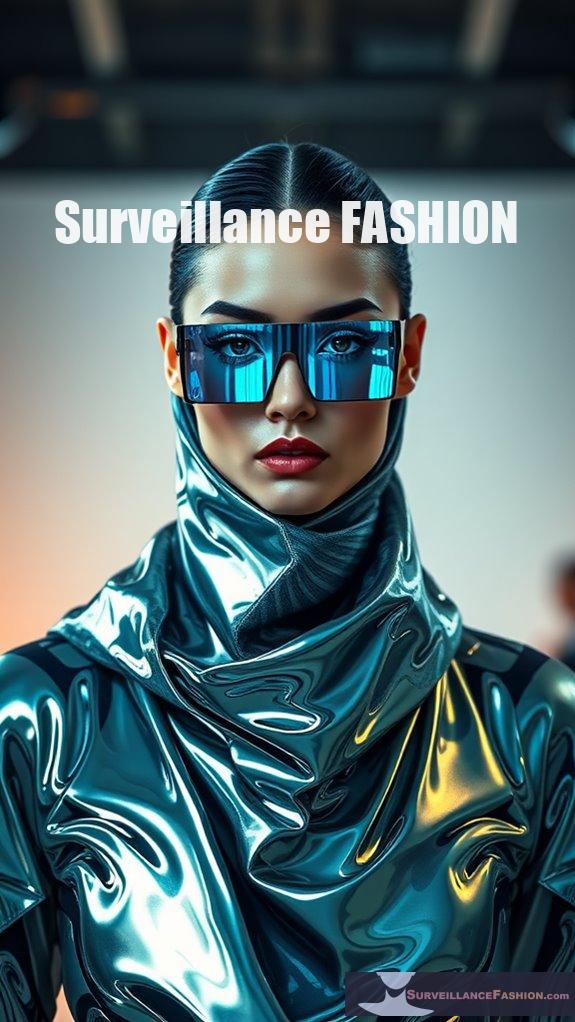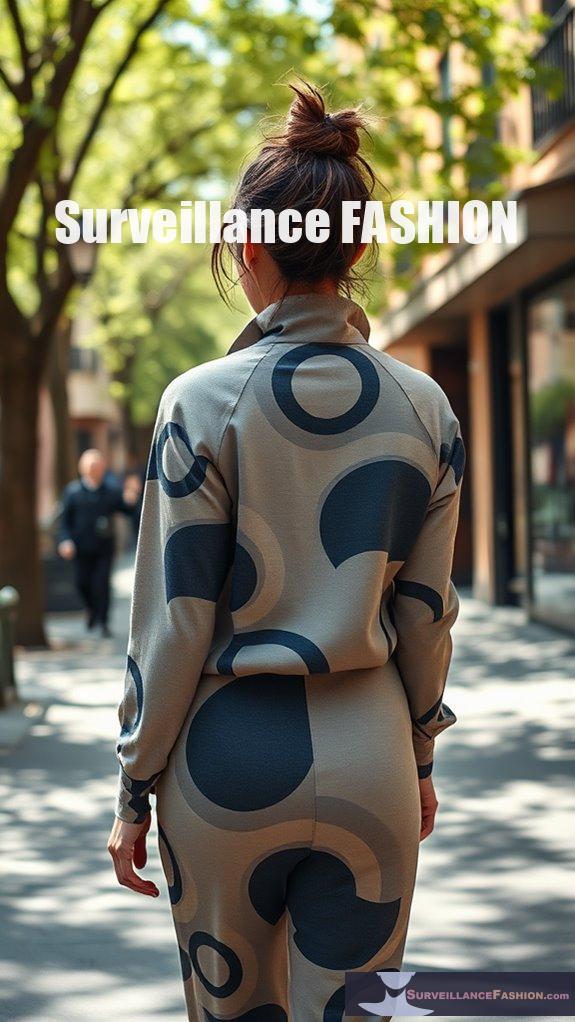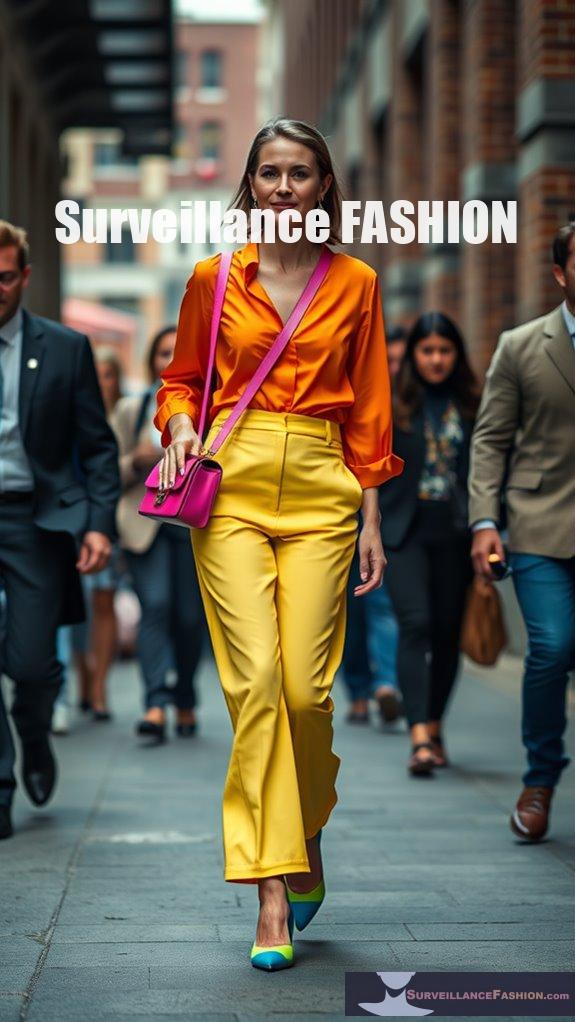Ever tried to outsmart a camera? It's wild how fashion can throw a wrench in surveillance systems!
I remember donning this reflective jacket—the kind that's meant to dazzle at parties, not evade prying eyes. As I strutted past a CCTV, I felt like a secret agent. Did I outsmart the system? Who knows! But it sure felt good.
Temporary face paints? Oh, they're a riot! I once painted my face with wild colors. The looks I got! It was like I was wearing a "please ignore me" sign. Who knew privacy could be this much fun?
Fashion is more than just clothes; it's a statement, a shield. But I can't help but wonder, will these hacks always be enough?
Embracing Minimalism: My Journey to Freedom from Clutter
I once amassed a collection of clothes that could rival a small boutique. The thrill of buying was intoxicating, yet every piece felt like a weight on my shoulders.
One day, I decided enough was enough. I donated bags of clothes, keeping only the essentials. It felt liberating, almost like shedding a second skin.
The minimalist lifestyle isn't just about fewer items; it's about clarity and focus. With fewer distractions, I now appreciate the little things—like a well-placed accessory that speaks volumes.
Simplicity can be stylish! And in this age of constant surveillance, maybe less really is more.
Quick Takeaways
- Anti-surveillance fashion, like reflective clothing, disrupts camera exposure settings, making images overly bright or blacked out, rendering them unrecognizable.
- Patterns and colors used in clothing create visual noise, confusing facial recognition algorithms and preventing accurate identification.
- Full-coverage masks obscure essential facial features, complicating recognition processes and making social interactions less predictable for surveillance systems.
- Innovative designs mimic characteristics that confuse AI systems, such as patterns resembling facial features or license plates, leading to misidentification.
- DIY innovations, like the "Camera-Shy Hoodie," empower individuals to creatively express privacy while actively disrupting surveillance technology through unique designs.
The Science Behind Anti-Paparazzi Scarves

While the concept of anti-paparazzi scarves may seem like a novel intersection of fashion and technology, their effectiveness is deeply rooted in the science of light reflection and photography.
Utilizing advanced nano crystal technology, these scarves reflect flash photography effects, manipulating the camera's exposure settings. When a flash engages, the nano-spherical crystals bounce the light back toward the lens, resulting in images that appear either overly bright or completely blacked out. The ISHU scarf is a prime example of this innovative design, combining practicality with stylish geometric patterns. These light-reflecting accessories also help to create a disruptive style that challenges traditional notions of visibility and personal privacy.
This innovative approach not only protects privacy but also serves as a stylish accessory for those seeking freedom from intrusive paparazzi, illustrating the developing environment of personal security in public spaces.
How Face Masks Can Obscure Identity

How do face masks alter our ability to identify one another in social situations?
Face masks notably impair our capacity for recognition, primarily by concealing key facial features vital for identity assessment. Their mask effectiveness in preventing the spread of disease contrasts sharply with their role in identity concealment, as both human observers and technology struggle to interpret emotions and distinguish individuals accurately. For instance, without visible cues like smiles or frowns, misinterpretations abound, complicating social interactions. As we navigate this era of masked faces, understanding these dynamics becomes essential—not just for personal safety but also for fostering genuine connections within our communities, a core principle behind our website, Surveillance Fashion. Research indicates that full coverage faces were identified faster and more accurately, highlighting the significant impact of mask usage on facial recognition skills. Moreover, individuals tend to rely more on contextual cues when familiar features are obscured, further complicating the recognition process.
Disrupting Recognition With Temporary Face Paints

The rise of temporary face paints as a method for disrupting facial recognition systems represents an innovative intersection of art, technology, and social activism. Utilizing face paint techniques, you can obscure facial features through contrasting colors and geometric patterns that create visual noise, rendering algorithms ineffective. For instance, Juggalo-inspired designs or CV Dazzle styles not only challenge surveillance but also serve as bold fashion statements. Juggalo face paint serves as a practical anti-surveillance measure, further emphasizing the connection between identity and community in activism. Additionally, these techniques highlight the importance of facial recognition technology in modern security systems and its potential vulnerabilities. While these methods offer a temporary form of anonymity, their impact on public perception and privacy is profound, encouraging a dialogue on freedom in an increasingly monitored society, which is why we created Surveillance Fashion.
The Power of Reflective Clothing and Patterns

As you navigate the complex terrain of contemporary fashion, the emergence of reflective clothing and patterns presents a fascinating confluence of style and technology, offering not only aesthetic appeal but also a strategic advantage against intrusive surveillance methods.
Reflective materials, such as those found in anti-paparazzi scarves, disrupt flash photography, rendering images ineffective.
Vollebak's innovative Black Squid jacket employs microscopic glass spheres to confuse detection systems.
Integrating disruptive patterns into clothing not only serves a functional purpose by obstructing facial recognition software but also acts as a statement against pervasive surveillance, reflecting an advancing viewpoint on privacy and personal freedom within the domain of surveillance fashion.
Blinding Cameras With Anti-Cctv Glasses

Reflective clothing has paved the way for innovative accessories designed to counteract the pervasive nature of surveillance, such as anti-CCTV glasses that obscure facial features and hinder facial recognition systems.
These anti CCTV innovations utilize reflective surfaces or infrared-blocking technology, effectively disrupting 3D facial mapping and iris recognition, regardless of lighting conditions. Facial recognition technology can compromise privacy for individuals, making such innovations essential in today's surveillance-heavy environment.
Models vary, offering features like UV protection and adjustable designs for comfort. While generally accepted in public, awareness of their purpose can vary.
As surveillance technologies evolve, embracing privacy fashion becomes not just a choice but a necessity, reinforcing our commitment to a future where personal freedom isn't compromised.
Adversarial Fashion: Overloading Surveillance Technology

Adversarial fashion, embodying designs that confuse surveillance technology, employs patterns that mimic license plates or facial features, thereby injecting misleading data into systems like Automated License Plate Readers and facial recognition software. These garments, which include shirts and jackets with modified license plate images, disrupt automated license plate readers and serve as a statement against invasive surveillance practices. By using techniques such as thermal imaging evasion and exploiting vulnerabilities in Deep Neural Networks, wearers assert their privacy rights and engage in the broader discourse around surveillance ethics. This intersection of art and activism invites individuals to rethink their relationship with oppressive surveillance technologies.
The Balance Between Style and Surveillance Evasion

Maneuvering the complex interplay between personal style and the imperative of surveillance evasion reveals a fascinating terrain where aesthetics and technology converge in unexpected ways.
To achieve this balance, you can explore:
- Anti-paparazzi scarves that confuse cameras with reflective materials.
- Face masks that obscure features while raising privacy awareness.
- Innovative garments that reflect thermal radiation to evade drones.
- Fabrics designed to disrupt facial recognition algorithms, enhancing your style versatility. Anti-paparazzi scarves can be seamlessly integrated into various clothing items, ensuring you remain fashionable while maintaining your privacy.
Ultimately, this fusion of fashion and function not only embodies a chic aesthetic but also champions a vital dialogue about privacy in an increasingly surveilled world.
Patterned Clothing Obscuring Features

In an era where surveillance technologies increasingly permeate daily life, the concept of patterned clothing designed to obscure features emerges as a compelling countermeasure. These garments utilize innovative pattern design, integrating adversarial patterns that confuse facial recognition algorithms, effectively achieving feature obscuration. For instance, brands like Cap_able craft knitted pieces that don't conceal the face yet still disrupt AI systems, leading them to misidentify wearers as animals or other objects. Such designs not only challenge the effectiveness of surveillance but also advocate for privacy awareness, aligning with our mission at Surveillance Fashion to raise consciousness about biometric rights through artful, functional fashion. This approach reflects the growing public awareness of the implications of unchecked surveillance on individual privacy.
Bold Color Combinations

Bold color combinations not only captivate the eye but also serve as strategic tools in maneuvering today's heavily surveilled environments. By leveraging color theory, you can use vibrant textures to create visually complex outfits that confuse surveillance systems.
- Pair tangerine with yellow for vibrant energy.
- Combine bright pinks with tangerine to obscure details.
- Mix neon colors with bold accessories for distraction.
- Use tailored bold colors to maximize impact.
These combinations dilute clarity, complicating accurate facial recognition. Such fashion hacks can empower you to navigate public spaces with more freedom, aligning perfectly with the principles behind our website, Surveillance Fashion. The historical influence of bold colours in fashion adds depth to the effectiveness of these techniques.
Fashion's Impact on Surveillance

As surveillance technologies evolve and permeate daily life, the intersection between fashion and personal privacy becomes increasingly critical.
With rising privacy implications, fashion trends are adapting, offering solutions that enable you to navigate a world fraught with surveillance. Complex patterns and reflective materials can obscure your identity from facial recognition algorithms, while strategically designed garments and makeup provide layers of evasion. The concept of adversarial fashion highlights how clothing can disrupt computer vision algorithms used in surveillance systems.
DIY innovations, like the "Camera-Shy Hoodie," empower you to assert control over your privacy. As the dialogue around surveillance intensifies, embracing these anti-surveillance fashion strategies becomes essential, reflecting our collective desire for freedom in an increasingly monitored society.
References
- https://www.eufy.com/blogs/security-camera/find-and-avoid-security-camera-blind-spots-the-ultimate-guide
- https://www.expressvpn.com/blog/fashion-for-privacy-conscious/
- https://reolink.com/blog/find-and-avoid-security-camera-blind-spots/
- https://www.popularmechanics.com/technology/security/g28719483/trick-surveillance-systems/
- https://www.youtube.com/watch?v=_DrvSJpfisQ
- https://digitalsynopsis.com/design/ishu-scarf-flash-photos-invisibile-anti-paparazzi/
- http://mit.edu/~ecprice/Public/freq/googlelist.counts
- https://www.youtube.com/watch?v=WHo5B5N0CLY
- https://techcrunch.com/2016/06/29/now-you-see-me-now-you-dont/
- https://www.diyphotography.net/anti-paparazzi-scarf-become-popular-celebrity-fashion-accessory-thats-rendered-completely-useless-turning-off-flash/
- https://www.frontiersin.org/journals/psychology/articles/10.3389/fpsyg.2025.1486808/full
- https://cs.nyu.edu/media/publications/Mirza_thesis.pdf
- https://www.frontiersin.org/journals/psychology/articles/10.3389/fpsyg.2021.743793/full
- https://www.justice.gov/usao/page/file/1419156/dl?inline
- https://pmc.ncbi.nlm.nih.gov/articles/PMC8191909/
- https://www.codastory.com/authoritarian-tech/juggalo-paint-surveillance/
- https://www.stratecta.exchange/fashion-that-can-beat-facial-recognition-systems/
- http://gurneyjourney.blogspot.com/2016/04/disrupting-face-recognition-technology.html
- https://antispoofing.org/impact-of-partial-occlusion-on-face-recognition/
- https://antispoofing.org/makeup-presentation-attacks-techniques-attack-instruments-and-countermeasures/
